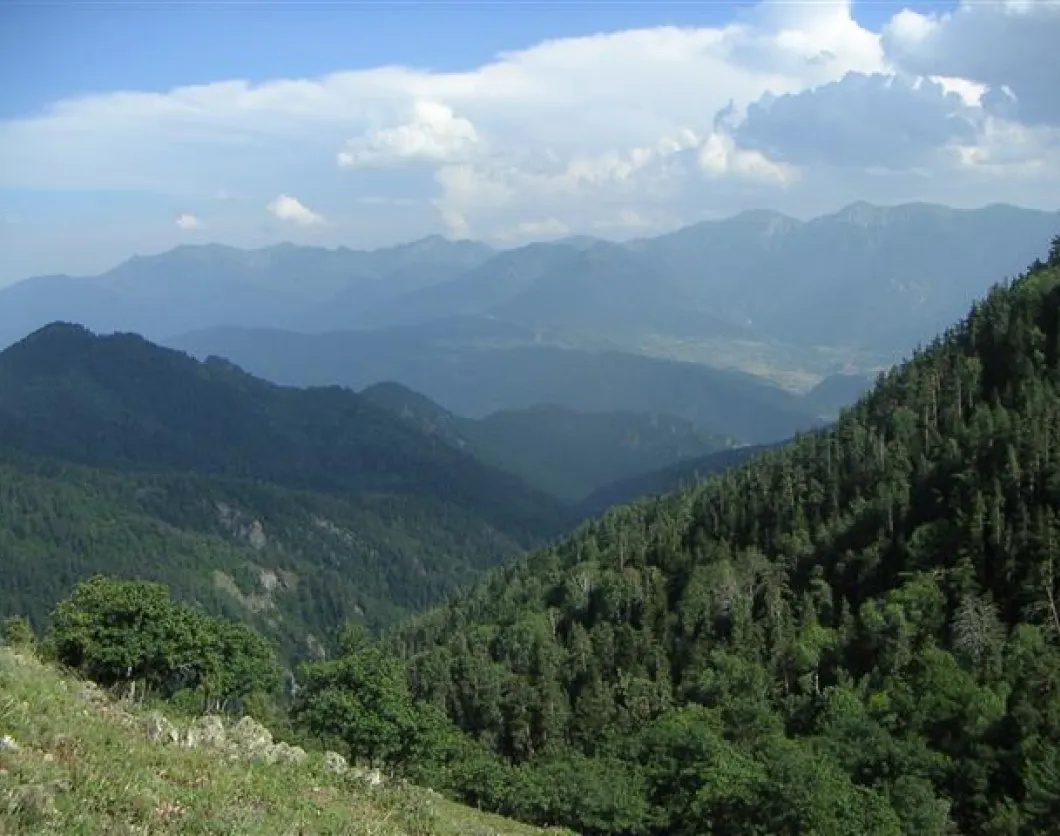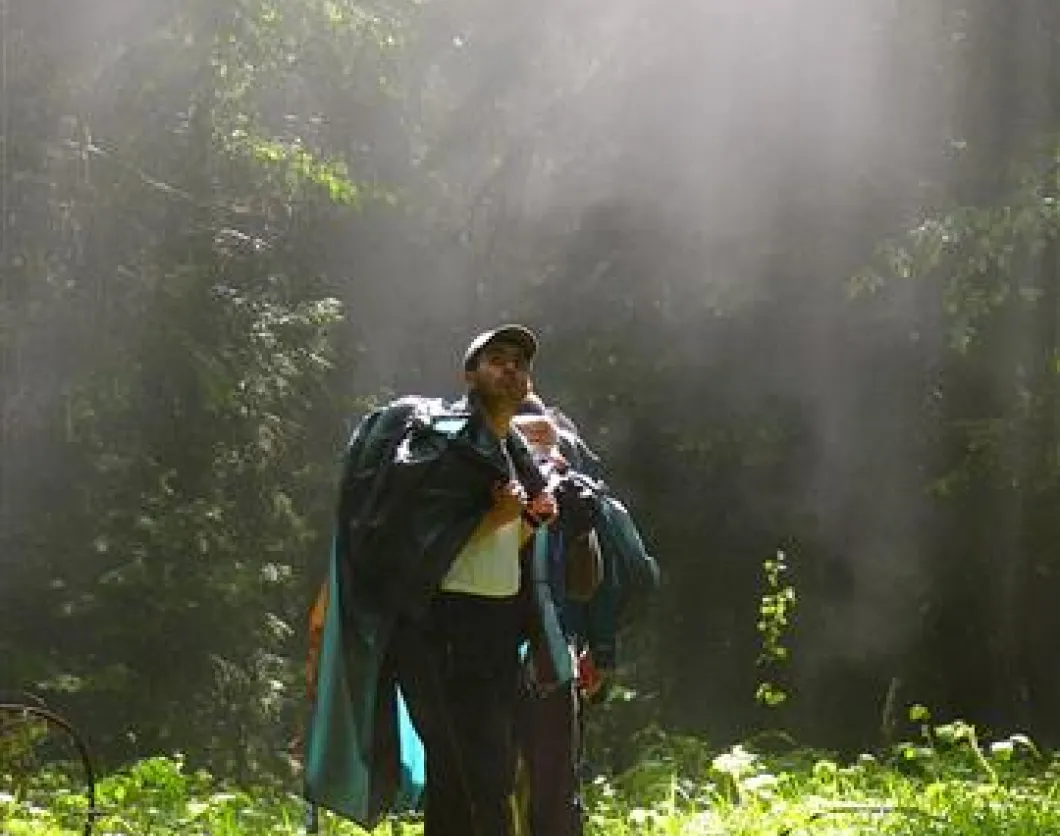During the Caucasian conflict, last August, forest fires broke out in the Borjomi Gorge, a popular recreational area in Central Georgia, where also Borjomi Kharagauli National Park is located. With more than 76.000 hectares of forest and endangered species like the red deer, the lynx, the brown bear and the wolf, the park belongs to the last vast wilderness zones of Euroasia and was certified a PAN Park in 2006. The PAN Parks emblem is considered as the Michelin Star among European national parks, a guarantee for highest quality in conservation efforts and sustainable tourism. PAN Parks Foundation interviewed the Borjomi Kharagauli’s chief administrator Levan Tabunuidze about the cause of the fire, the damage it brought and future reforestation plans.
PP: What was the cause of the fire? Were there any bombs dropped on the national park?
L.T.: No, the fire erupted because of flammable rockets, not bombs. The police investigated the case and talked to eye-witnesses, who had seen Russian helicopters fly over the region, just before the fires started. Another proof for this was that the fire brigade had received various calls from locals, who had noticed fires in different areas of the gorge, all erupting more or less at the same time.
PP: How many fires broke out in the Borjomi Gorge?
L.T. There were six fires in the entire Borjormi Gorge area. Three of them erupted directly in the national park. One broke out in Likani, which is very close to our administration building. We had noticed it early, so rangers, locals and the fire brigade were able to extinguish it quickly. The second fire was close to Khvabiskhevi village and the third and biggest of all erupted right in the middle of wilderness. It takes about one hour by car and three hours on foot to reach the place.
PP: When did the fires break out? Was there any staff in the park at that time?
L.T. They broke out between 12.30 and 2 pm. Our staff was on duty. The rangers were in the park and the administration staff in the office.
PP: Did anyone get injured or killed in the area?
L.T. No, fortunately, nobody was killed, since the main conflict area was 150 km away from us.
PP: Luckily, only ten hectares of the national park were destroyed by the fire. What kind of trees grows there? What animals live there?
L.T. The strongest fire erupted in the coniferous forest of our park. This is where for example pine trees, spruce and yew grow. It’s also home to animals like the red deer, brown bear or lynx. We do not have any detailed information about how many animals got killed in the fire but we found burnt horns of the red deer.
PP: The buffer zone which surrounds the park was the most heavily burnt area in the Borjormi Gorge region. Is this also a "protected land?"
L.T.: The buffer zone borders our national park but it’s not protected area anymore. This is where the summer resorts are located.
PP: How long did it take to extinguish all fires? Did you use helicopters? Did you get any help from abroad?
L.T.: It took us more than a month to extinguish the fires. The big problem for us was that we were not allowed to use any helicopters, no aircrafts at all, since the Russians were controlling the sky. Our neighboring countries Turkey and the Ukraine kindly offered us their help but also for them there was no guarantee that they would not be bombed. Only after the cease fire agreement, the Turkish government could help us with airplanes.
PP: Are there any reforestation plans?
L.T.: There is a plan of the Ministry of Environment and Natural Resources of Georgia to reforest the burnt areas. At this stage a governmental committee is studying the affected zones to set up an action plan.
PP: Apart from the forest, has anything else been destroyed in the park?
L.T: No, fortunately no tourist infrastructure, like trails or visitor centers, was destroyed. The park is ready to welcome tourists.
PP: When did you reopen the park for visitors again?
L.T.: We have actually never closed the park but of course during the conflict nobody came to visit us. The first tourists arrived again after 1st September.
PP: How many tourists have visited the park since then? Where were they from?
L.T.: We had about 619 tourists after the cease fire had been signed. They came from Israel, Poland, Germany, France and also domestic tourists fromGeorgia.
Thank you very much for the interview.
Borjomi Gorge is a picturuesque canyon of the Mtkvari (Kura) River in central Georgia. The Gorge was formed as a result of the Mtkvari River cutting its path through the Lesser Caucasus Mountains where the Trialeti and Meskheti Ranges meet. A significant portion of the Borjomi Gorge is covered by mixed and coniferous forests made up of oak, maple, beech, spruce, fir, and pine. A large portion of the Borjomi-Kharagauli National Park as well as the towns of Borjomi and Likani itself lie within the Gorge. On August 17th, Russian forces occupying Georgia started massive forest fires in the area, in violation of a cease fire during the 2008 South Ossetia War. Wikipedia.org
Photo: Borjomi National Park Archive










